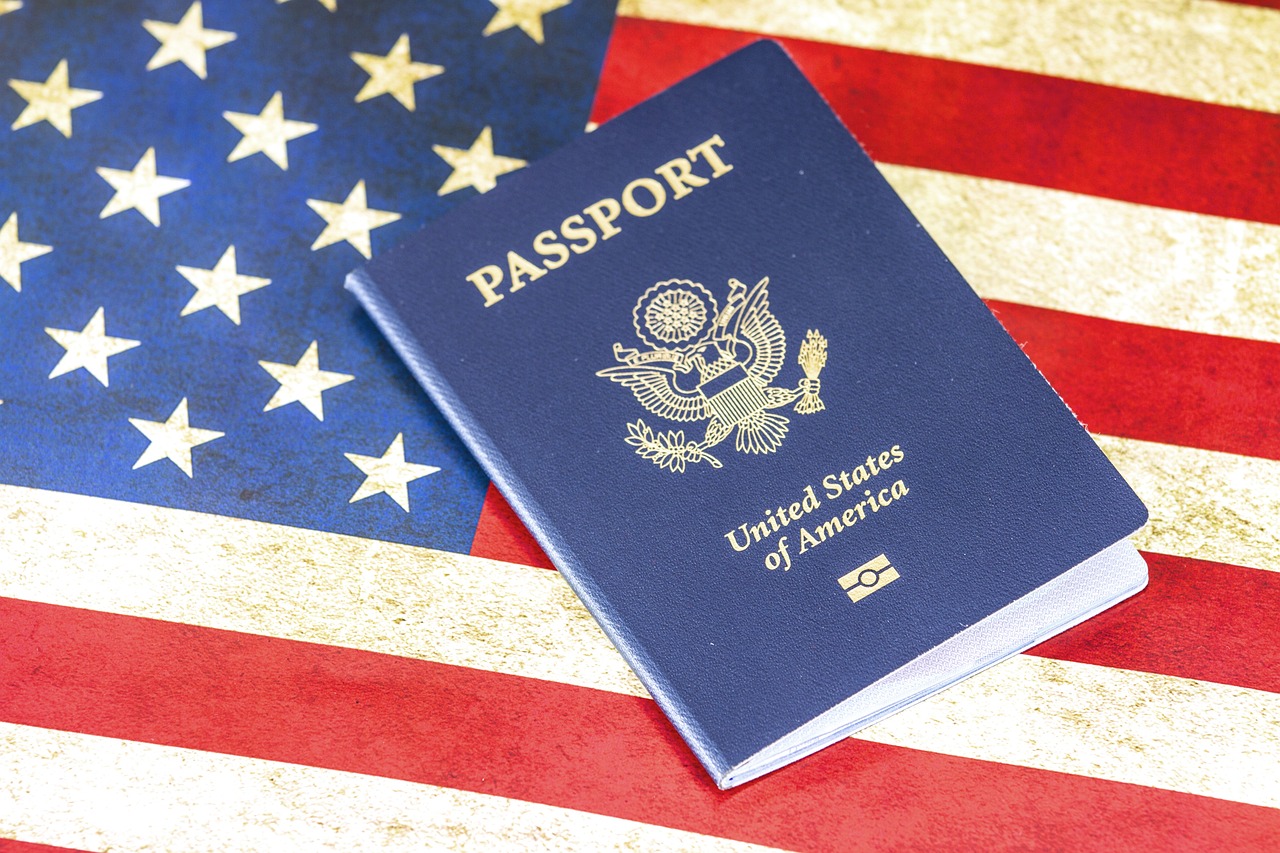Introduction
Receiving an O-1 visa denial can be a significant setback for individuals with extraordinary abilities seeking to work in the United States. An O-1 visa denial can not only crush career aspirations but also inhibit personal and professional growth. Planning the next steps after a denial and understanding the reason for the denial is crucial for those navigating this situation.
While this article provides valuable insights, remember it does not constitute legal advice. For personalized assistance with your immigration situation, please consult an immigration attorney. If you would like to speak with our lawyer, our customer care representative will happily arrange a call for you.
Understanding O-1 Visa Denial: Common Reasons
There are many different reasons why an O-1 visa may be denied. The good news is that most of them can be easily overcome and lead to a successful visa. After an applicant receives an O-1 visa denial, it is critical to understand the consequences and reason for the denial before continuing on your immigration journey.
Common Reasons for Denial
- Insufficient Evidence
Several factors can contribute to an O-1 visa denial, one main reason is where the applicant has provided insufficient evidence to demonstrate that they have met at least three of the O-1 visa criteria. In some cases, the supporting documentation submitted for the claimed criteria may be too weak or insufficient to convince the adjudicating officer that the applicant qualifies. Failure to provide sufficient evidence often leads to the issuance of a Request for Evidence (RFE) before the O-1 visa denial. That is why it is critically important for an applicant to seek out legal advice as soon as they have received a Request For Evidence (RFE) to plan a winning response early on in the process, in case they decide to file the application on their own at the beginning.
- Failing to Meet the O-1 Criteria
Another common reason for denial is failing to meet at least three the O-1 visa criteria. An O-1 visa can only be approved if the applicant demonstrates that he or she meets at least three of the O-1 visa criteria, by providing strong evidence supporting the criterion being claimed. To avoid falling into this situation, early on in the application process the applicant and employer/petitioner should consult with an experienced immigration attorney to carefully evaluate the applicant’s qualifications and put forth a strategy to claim as many criteria as the applicant qualifies for. For instance, if the applicant’s qualifications can convincingly prove that six of the O-1 criteria are met, then the petition should include ample evidence documenting that each and every one of those criteria have been met. Petitioners should not simply argue the minimum where the applicant meets more than three of the criteria.
To avoid the chances of a denial, before submission of your O-1 visa application, it’s essential to ensure that all supporting documentation clearly supports the criteria you are claiming.
- Issues with Employment Sponsorship
Another common reason for an O-1 visa denial is where there are issues relating to employment sponsorship. O-1 visas are not self-petitions. Instead, a U.S. employer or agent must file the O-1 petition with the U.S. Citizenship and Immigration Services (USCIS) on behalf of the applicant. The employer or agent bears the burden of showing that a valid employment relationship exists and that there is an offer of employment. Any discrepancies or concerns relating to the employer’s ability to fulfill their obligations can impact the application process and lead to a denial. To avoid this situation, please seek out legal advice from an experienced immigration attorney to address these concerns.
Receiving the Denial Notice
When an O-1 visa is denied, the petitioner will receive a detailed Notice of Denial from the U.S. Citizenship and Immigration Services (USCIS) explaining the exact reasons why the petition was denied. After receiving a Notice of Denial, the applicant and petitioner should immediately seek legal advice to carefully review its contents and fully understand the specific reasons behind the denial.
Impact on Immigration Status
An O-1 visa denial can significantly impact an individual’s immigration status and future plans. However, a denial does not mean permanent ineligibility. In most cases, a denial can be overcome by simply curing the defects of the initial petition, and re-filing it with USCIS.
Once a petition is re-filed and the required documentation is submitted, the visa application can be reassessed to determine eligibility.
- O-1 Petitions Seeking Change of Status
Understanding the impact of a denial on one’s immigration status is crucial for determining the next steps in the immigration journey. Noncitizens should be aware that they must depart the United States before their I-94 “Admit Until Date” expires unless they file for the change of status before the expiration date. However, this should be consulted with the immigration attorney, as not all statuses allow the change of status. Please seek legal advice prior to the expiration of your I-94 to plan accordingly, as this can have severe consequences.
What to Do Immediately After Your O-1 Visa application Is Denied
After receiving a Notice of Denial from USCIS, your next steps are essential and critical to your success. Working swiftly and getting legal advice from an immigration attorney is highly recommended to understand the reasons for denial and come up with a plan to overcome the denial.
Review the Notice of Denial
You and your employer must carefully review the Notice of Denial and seek immediate legal advice to discuss your next steps. The Notice of Denial provides valuable insights into the specific reasons for your denial. USCIS will explain why they believe you did not meet the O-1 visa criteria and the types of documentation that can be submitted in support of the criteria you are claiming.
Understanding the reason for your denial as discussed in the notice will help you and your employer create a stronger case and increase your chances of success in the future.
Consult an Immigration Attorney
After an O-1 visa denial, it is highly recommended that you seek the professional advice of an experienced immigration attorney. An experienced immigration attorney can provide invaluable assistance in navigating the complex legal landscape and offer insight into your visa denial. They can advise on various options that are most appropriate for you, including appeals, requests for reconsideration, or re-application with USCIS.
At PassRight, our attorneys are ready to help you submit the strongest case possible by walking you through the O-1 visa process from beginning to end to ensure your success.
Gather Additional Evidence
As previously outlined, one of the most common reasons for the O-1 visa denial is insufficient evidence of extraordinary abilities. To strengthen your case, applicant’s should focus on gathering additional documentation that specifically addresses the concerns raised in the USCIS notice of denial. This can include:
- Updated employment contracts;
- Evidence of high salary relative to the industry;
- Published materials about the applicant’s work;
- New and updated letters of recommendation from experts in the field;
- Recent awards or achievements;
- Memberships in professional associations that require outstanding achievements;
- Evidence that you have judged the work of others, in your field, either individually or on a panel.
Providing strong letters of recommendation is crucial when assembling your updated petition. Any new letters of recommendation should be detailed and address how the applicant meets the O-1 visa criteria.
Moreover, applicants should be as specific as possible when gathering additional evidence. In general, providing documentation that shows that you have held critical or leading roles can significantly strengthen your application.
In summary, taking immediate steps after an O-1 visa denial puts you in a better position for success during the re-application or appeals process. Addressing the reasons for denial with well-documented evidence of extraordinary ability in the applicant’s field will help the resubmission process.

Exploring Your Options After an O-1 Visa is Denied
After receiving an O-1 Notice of Denial, applicants must consult with an experienced immigration lawyer to discuss the options available to them immediately after the denial. This can include simply re-filing the application with USCIS, filing a motion to reopen, a motion to reconsider, or an appeal with the Administrative Appeals Office (AAO). Deciding which option to choose is a decision that must be made with your attorney as soon as possible, and will take into account several important factors such as your likelihood of success, costs, and time-sensitivity.
Please note an O-1 petitioner has only 33 days from the date of the denial notice to file an appeal or motion to reconsider (if the notice was received by mail).
- Re-Submitting the Case
For some applicants, simply re-filing the O-1 petition with USCIS may be the most suitable option. Generally, re-filing the application may be recommended where the petitioner can cure the defects of the initial O-1 application and provide additional or new evidence to demonstrate that the applicant meets at least three of the O-1 criteria. This is where evaluating the Notice of Denial becomes extremely important to fully address the deficiencies of the initial petition and overcome them in the re-submission.
- Filing a Motion to Reopen
A motion to reopen is usually based on new facts that were unavailable at the time of the original decision of the O-1 visa application. A motion to reopen must be filed within 30 days of the unfavorable decision (or 33 days if the denial notice was mailed by USCIS) and include the required form and filing fee. This option is best for applicants who have obtained new or additional evidence that supports their eligibility for the O-1 visa. The motion must be supported by affidavits or other evidence demonstrating the applicant’s qualifications at the time of the original petition.
This option is generally not suitable for applicants who wish to resubmit previously provided evidence or reassert previously stated facts.
- Filing a Motion to Reconsider
A motion to reconsider challenges the original decision based on an incorrect application of policy or law. This is usually used when an applicant believes the USCIS officer has misinterpreted the law or misapplied the O-1 visa criteria to their case. The motion must establish that the decision was incorrect based on the evidence of record at the time of the initial decision. Similarly, a motion to reconsider must be filed within 30 days of the unfavorable decision (or 33 days if the denial notice was mailed by USCIS) and include the required form and filing fee.
- Administrative Appeals Office (AAO) Appeal
Another option to challenge an O-1 visa denial is to file an appeal with the Administrative Appeals Office (AAO). The AAO has jurisdiction to appeal denials over approximately 50 immigration case types filed with USCIS field offices. Generally, to file an appeal, applicants must file Form I-290B, Notice of Appeal or Motion, within 30 calendar days after receiving the decision or 33 calendar days if the decision was mailed. The AAO conducts reviews of the record anew and can address new issues that still need to be raised or resolved in the prior decision.
Acting quickly and seeking legal advice is essential to determine the appropriate course of action following an O-1 visa denial.
Conclusion
Navigating the aftermath of an O-1 visa denial can be challenging, but it’s not the end of the road. Understanding the reasons behind the denial and taking prompt action is critical to moving forward. Whether it’s gathering more compelling evidence, seeking legal advice, or exploring appeal options, there are several paths to consider. The key is addressing the concerns raised in the O-1 visa denial notice and strengthening your case accordingly. An O-1 visa denial is a chance to reassess, improve, and try again, which PassRight can help you do!
Schedule a call with our customer care team to learn more about how our attorneys can help you with your case.
FAQs
What occurs if an O1 visa is denied?
If your O-1 visa application is denied, you will receive a Notice of Denial from USCIS explaining the exact reasons for your denial. After receiving this notice you and your employer must seek immediate legal assistance to determine the most appropriate course of action. Acting quickly is critical because denial notices contain important deadlines for appeal.Does an O-1 denial stop me from re-applying for a future visa?
After an O-1 application is denied by USCIS, your employer has the opportunity to re-apply again in the future for the O-1 or another visa type. Each new application submitted with USCIS is reassessed to determine eligibility. Please seek the advice of an immigration attorney to discuss the most appropriate course of action following a denial.How soon can you reapply for an O-1 after a denial?
Your employer can resubmit the O-1 application on your behalf if you can provide new information or evidence addressing the shortcomings of your initial application. Please contact an experienced immigration attorney to evaluate your initial denial notice and make further recommendations to overcome your denial. However, there is no specific time that you need to wait in order to re-apply.What are the costs involved in reapplying after an O-1 visa denial?
Costs can vary, but in general, your employer will need to pay the O-1 application fee again when reapplying for your O-1 visa.How long does it take to reapply for an O-1 Visa?
Generally, it can take approximately 4-12 weeks to prepare and assemble an O-1 visa application to include new or additional supporting documentation and evidence. However, please note that the time frame for preparation will depend on the complexity of your case. Once the case is filed with USCIS, if you elect to pay for premium processing service you can receive a decision in as little as 15 business days. If you do not file your case with premium processing service, you can expect to wait between 3 to 6.5 months to receive a decision under USCIS’ regular processing times.









